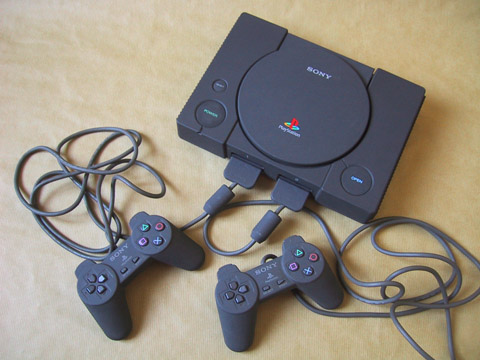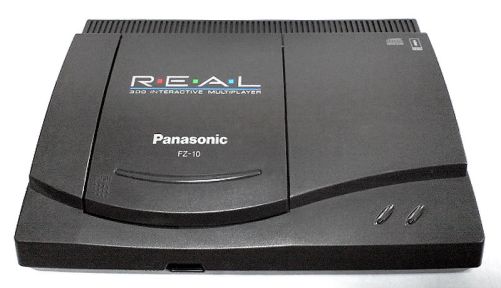Posts Tagged ‘3do’
Fred’s Tech Corner: 3DO USB Host Controller Installation and Setup
Fred recently purchased the USB Host Controller by Mnemo to replace his 3DO’s CD-ROM drive with a USB reader to run games. This video demonstrates how to install, set up, and run games on an FZ-1 (tray loader). The FZ-1 is a solderless solution, for the FZ-10 you will need good soldering skills. Please see below for links mentioned in the video and for the FAQ, which I ask that you read before asking questions. This was not a “review copy” nor was it given for free, this was purchased by me at full price. I have no affiliation with Mnemo and receive no kickbacks from these links. Thanks for watching.
3DO Host Controller site for ordering and getting the BIOS and NVRAM files: http://3do-renovation.ru
Official Web Site for ImgBurn so you can rip your games to ISO format: http://www.imgburn.com/
Official Web Site for WinISO to convert your games from other image files (like bin/cue) to ISO for use in this device: http://www.imgburn.com/
FAQ regarding the device and compatibility: https://gaminghistory101.com/3do-usb-faq/
Podcast: The History of CD-ROM Consoles, Part 2

This week Fred sits down with Ali of 42 Level One to discuss the more popular 32-bit generation of CD-ROM consoles. What started as a disaster with the 3DO Interactive Player gave way to the big releases of the Sega Saturn and the Sony Playstation. While the Saturn may seem dead in the water for the West, it was a strong presence in the East. Finally everything wraps up with the beloved console that lacked sales: the Sega Dreamcast.
Review: Sewer Shark (Sega CD)
 Console: Sega-CD/Mega-CD
Console: Sega-CD/Mega-CD
Released: 1992
Developer: Digital Pictures
Publisher: Sony Imagesoft
Instruction Manual: Helpful – Link
Difficulty: Moderate
Played it as a child? Yes
Value: $0.87 (used), $20.00 (new) (pricecharting.com)
Price: $3-$10 (used) – Since this game was a pack-in, almost never seen sealed outside console bundles
Other Releases: 3DO
Digital Release? No
Sewer Shark is another converted game from the canceled Hasbro NEMO console and was intended to be played using a VHS (just like Night Trap) although how they were going to do it is completely beyond me. Most of the games I covered last week were good concepts that resulted in okay launch games that were flawed either by long load times or just not fully fleshed out. I would argue that among the launch window titles, Sewer Shark is the exception. It is a complete video game that utilizes the video functionality of the console and combines it with simple gameplay mechanics to make a solid experience.
 Set in a post-apocalyptic world, the surface of Earth is unlivable and creatures are forced underground to dwell in drab conditions. Not only that but the creatures of the sewers have mutated, causing larger sizes (scorpions and bats) and hybrids (ratigators – a hybrid of rats and alligators) that make sewers a dangerous world to trek on foot. As a result, little ships that can navigate the sewers, known as Sewer Sharks, navigate the tunnels to get people around, hunt for food, and offer a promise of the one haven left on the planet: Solar City. In Sewer Shark you play a new pilot recruit (nicknamed “sewer jockey”) that has the overall goal of retiring in Solar City. Unfortunately almost every jockey that attempts the trek dies in a sewer crash or by the hands of some mysterious danger in Sector 19, the final stretch before Solar City. As best put by your co-pilot Ghost in the beginning, you receive, “a name, a boss, a friend, and a reason to live…a million pounds of tubesteak, that’s all you gotta deliver today hotshot!” in order to make it to the end. This is important because the game has a very simple task – navigate the sewers, kill enemies to collect points (pounds of tubesteak), and once you hit a million you get the final encounter. It’s a pretty decent setup and definitely a concept not overused in games at that point, unfortunately to collect all this information you have to read the manual and play close attention to the introduction that can be skipped by simply pressing start.
Set in a post-apocalyptic world, the surface of Earth is unlivable and creatures are forced underground to dwell in drab conditions. Not only that but the creatures of the sewers have mutated, causing larger sizes (scorpions and bats) and hybrids (ratigators – a hybrid of rats and alligators) that make sewers a dangerous world to trek on foot. As a result, little ships that can navigate the sewers, known as Sewer Sharks, navigate the tunnels to get people around, hunt for food, and offer a promise of the one haven left on the planet: Solar City. In Sewer Shark you play a new pilot recruit (nicknamed “sewer jockey”) that has the overall goal of retiring in Solar City. Unfortunately almost every jockey that attempts the trek dies in a sewer crash or by the hands of some mysterious danger in Sector 19, the final stretch before Solar City. As best put by your co-pilot Ghost in the beginning, you receive, “a name, a boss, a friend, and a reason to live…a million pounds of tubesteak, that’s all you gotta deliver today hotshot!” in order to make it to the end. This is important because the game has a very simple task – navigate the sewers, kill enemies to collect points (pounds of tubesteak), and once you hit a million you get the final encounter. It’s a pretty decent setup and definitely a concept not overused in games at that point, unfortunately to collect all this information you have to read the manual and play close attention to the introduction that can be skipped by simply pressing start.
Guilty Pleasure: Night Trap (Sega CD/32X CD/3DO/PC)
 Console: Sega-CD/Mega-CD, 32X CD, 3DO, PC
Console: Sega-CD/Mega-CD, 32X CD, 3DO, PC
Released: 1992
Developer: Digital Pictures
Publisher: Sega (Sega/Mega-CD, 32X CD), Virgin (3DO), Digital Pictures (PC)
Instruction Manual: Not necessary – Link
Difficulty: Easy
Played it as a child? Yes
Value: $25.00-$50.00 (used) $50.00 (new) (pricecharting.com) – Prices for various platforms
Price: $25-$50 (used) N/A (new) on eBay
Digital Release? No

Oh Night Trap, your reputation precedes you. In actuality this game has received far too much press than it’s probably worth and constitutes an odd sense of rarity about the title. It’s too bad because had this title fallen into the $5-$10 category that its brethren Sewer Shark, Corpse Killer, and Double Switch dwell, more people would probably appreciate the title. Unfortunately due to some senate hearings and the fact that this game was alongside Mortal Kombat and Lethal Enforcers for why the ESRB ratings needed to exist in the first place, people think they are going to see some explicit content. That, friends, is simply not true. Putting all that publicity aside, there is a meaty cult-style game here that perhaps suffers less than other full motion video (FMV) games. It’s not great, but it sure is fun to watch at least once.
Podcast: Happy Birthday to the 3DO

Born on October 4, 1993, the 3DO game system was reponsible for a lot of firsts. One of the first CD-ROM consoles, the first 32-bit console, and the first console that relied solely on 3rd party manufacturing. For all it gets harped on, the 3DO still houses a strong library that borrows from both consoles and PCs as well as paving the way for original titles. Shawn Freeman from Knuckleballer Radio joins us to discuss the glory that was the 3DO.
Generation Gap Pt. 4: 32-bit (with a dash of 64)
By the time the SNES was dominating and the Sega Genesis was locked in an endless sea of add-ons to save the dying console, electronics manufacturers began to step up and create many of their own consoles. As a result, the market was flooded with overpriced horrendous hardware. They seemed to have everything a gamer wanted: new media format (the cheaply priced cd was preferred by developers to reduce production cost and retail price), impressive graphics and processors, and lets not forget the large numbers like “32” and “64” prominantly displayed on the startup screens. Unfortunately they lacked one important thing: good games. Still, that didn’t prevent many manufacturers from creating a loose version of the video game crash of 1983. Thankfully one lone electronics company entered the foray with the next step in gaming – that company was Sony.
Electronics Companies Go Bananas (or Pre 32-bit Gaming)

JVC’s Xeye
I’m guessing somewhere around the Sega CD, boasting the ability to play your new audio CDs through your television as an added feature, electronic companies started to take notice of gaming systems. As you guide through the progression of consoles the consumer electronics market grows stronger with gamers – let’s face it, they’re the perfect early adoptors. Quickly companies scrambled to enter the gaming market including JVC, Phillips, Panasonic, Pioneer, Sony and even more. Some of these companies licensed existing hardware, like JVC did with the X’Eye, a Sega Genesis/Sega CD hybrid that was re-branded with JVC’s logo. On the other hand, Phillips, Panasonic and Pioneer – imagine keeping these companies straight as a consumer – released their own hardware with a (arguably) library of games. In the end, they all sucked and had ridiculous price tags pushing back the concept of consumer electronics meeting gaming for at least another six years. Below are the early disc-based consoles that failed so horribly.
